Lutsk
Volhynia Gubernia
by Deborah G. Glassman
Jewish Images through a Modern Lens
Marvin Brooks wife’s family (GILDIN) is from Lutsk. In 2003, he paid a photographer to take pictures of the city. That gentleman, Mr. Olexsander Denisenko, traveled to Lutsk by train and provided the following historical survey, report and photographs to Mr. Brooks. Thanks to Marvin for sharing his research and pictures of the town.
Report on the Visit to Lutsk on July 11, 2003
People contacted:
Gaidar, Aleksandr Anatolievich – the head of the Jewish secular society;
Nakonechny, Wladislaw Andreevich – historian, specialist in Holocaust events.
Kelmis, Anna Hryhorivan – Holocaust survivor.
Places visited:
1) Historical archive of Volyn oblast at Veteranov street.
2) Jagelonska street, - now Lesi Ukrainki street.
3) Bazylianska – now Danyla Halytskoho street.
4) Jewish secular society.
5) Old fortress.
Locating the streets turned out to be easy. Jagielonska is now called Lesi Ukrainki; Bazylianska is called Danyla Halytskoho. The streets are marked with red lines on the modern map, synagogues - with Magan Duvids. Both street are located in the very center of the city. The planning of the city did not change much, the synagogue marked on your map remains one of the main landmarks of the city. During the WW 2 there were some battles in the city, but most of he buildings have survived. After the war the synagogue was turned into gymnasium (sport hall) and supplemented with !swimming pool. It still remains the property of the sport club – Dinamo. The interior lost all of the objects or decoration of religious relevance. During the Holocaust all the area to the East from the synagogue was turned into ghetto, all the Jews were moved there, by mid 1942 most of the Jewish residents were exterminated in several actions, there are several massive extermination places, BTW, one was in Sofijowka, the village was completely destroyed and all the residents killed. Mr. Gaidar is planning to build a monument there. Members of the Jewish society are working to commemorate the places of mass extermination of Jews, which are numerous in the area around Lutsk.
One more synagogue has survived the war and was turned into philharmonic hall by the Soviets, recently it was given to the Jewish secular society and is used now as the Jewish cultural center. Near this building used to be the old Jewish cemetery, now on this place stays school No 1, so all the pre-war graves are under the school and its area. Jagelionska is the most central street of Lutsk with nice promenade and plenty of bars, restaurants and shops. At the antique store on this street I found and bough the old Hanukah candlestick and the crown from Torah from the local synagogue. There is one little contradiction about this street, there is no number 64 there now, the numeration finishes with the number 52, though there are several new larger post war houses, that might have replaces the more numerous smaller houses, hence the numeration is different. Finding number 8 on Bazylianska street turned out to be easy. This whole area has survived the war fairly well. The houses are small but very solid; the ground floors were used and often still used for businesses, mostly stores.
Mr. Denisenko here began the illustrated portion of his report. We will intersperse them with some of his email notes on the people and places he described.
"Mr. Gaidar is the chairman of the Jewish Secular Cultural Society of Lutsk. I think he also works for "Hassed Arie." I have spoken with Mr. Gaidar, its chairman and the clerk holding the members list [and inquired about the family name GILDIN]. They never heard of the name Gildin. The only similarity is with the name Kelmis, Anna Grogorievna - the member of the community. In Lutsk now live more one thousand Jews, most of them came to the city from the eastern ukraine after WW 2.
Bazylianska Street (where the GILDIN family lived)
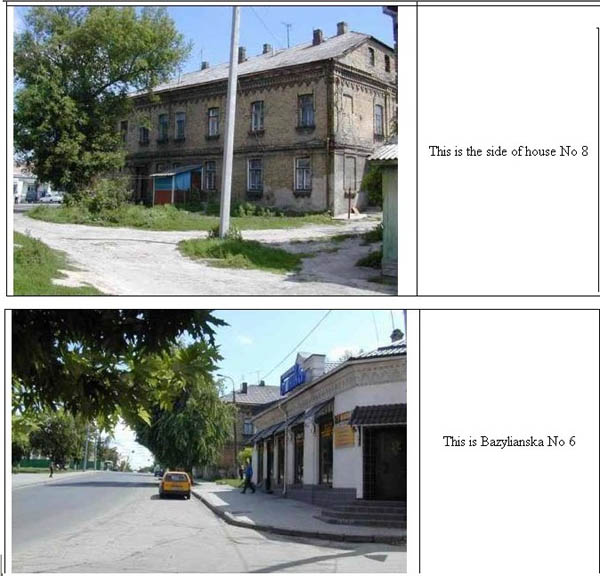
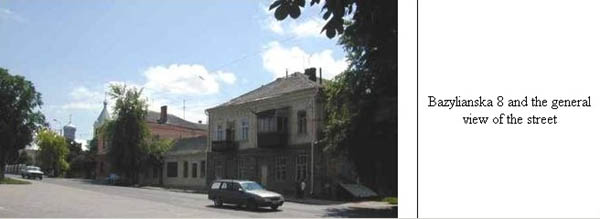
Mr. Brooks - "I am attaching a picture from about 1925 showing the Gildin family at their home. I am sorry I did not send it before the trip! (I never expected you to find the place!) The windows look like those on many of the pictures and are very similar to those at the back of 8 Bazylianska. The extra wall does not seem to match. Do you have any comments?"
Mr. Denisenko - Yes this photo could have been of help. The whole area to the right from #8 looks like the basement of the ruined house, many broken bricks, so maybe the old #8 might have been to the right (not to the left from the present day #8); numeration actually starts from the right. Or there might have been two adjecent houses of the same type. In any case i am sure this is the right area
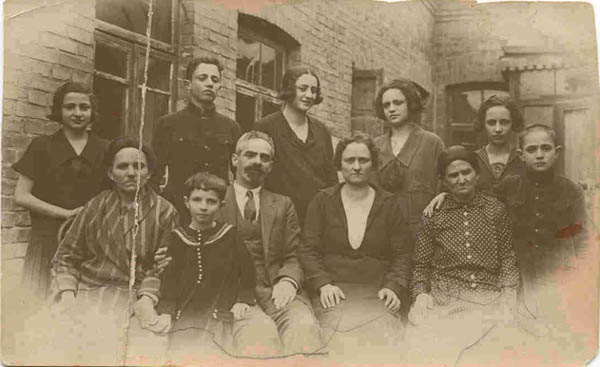
Samuel and Fruma Gilden and children 1925
seated in center Samuel (Shika) and Fruma (Fryme) GILDIN (later GILDEN). To the left of Samuel is his mother, Sussie Gitel GILDIN, and to the right of Fruma is her mother Gesa Leah KEJMACH (later KIMACH). Surrounding their parents are the seven children from left to right Dolores (Ita), Albert (Abram Ber), Jean (Genia), Celia Rose (Cipa Rajsia), Katie (Kaijla), Paul (Pinchos). Child in front is Evelyn (Chawa).
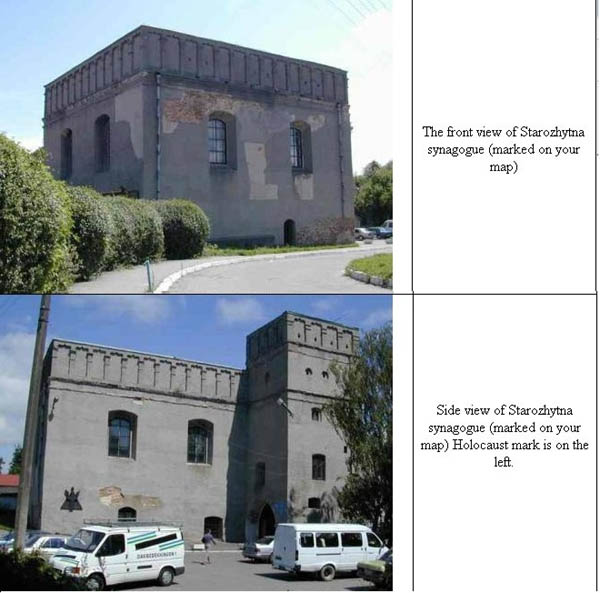
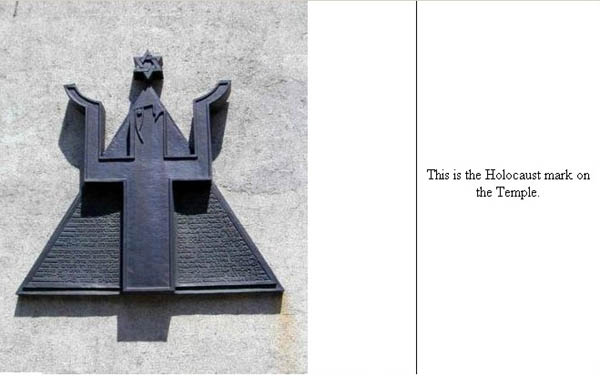
The sign on the Temple says: "This Temple was built by the Jewish community of Lutsk in the beginning of the 17 century as the Jewish spiritual, educational and cultural center in Volyn. The prominent monument of medieval architecture. Also, this place remembers about the tens of thousands of Lutsk Jews who were killed by Nazis in 1942."Near the synagogue was the gate to Lutsk ghetto.
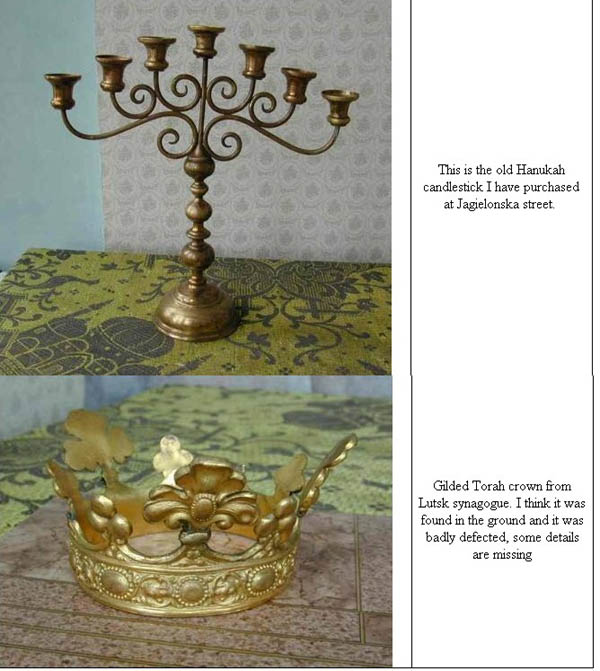
Marvin Brooks queried his researcher about these items and about donating them to the local cultural center or museum. Mr. Denisenko was of the opinion that there was little interest in displaying them locally and explained that the Jewish organization was secular rather than religious but that these items were not common in the area because "Most of such things (espcially pre Holocaust) were deliberatly destroyed, even having them was dangerous, so these things are quite rare now and for most people they are of no meaning [because the Jewish population is not religious and not from the area before the War]." He also gave a fuller description of the items:
"Frankly speaking I have no plans what to do with these things, I was very excited to see these things in this place while doing the research which is spiritually connected with these items. I do not [know] where these things are coming from, but have strong reasons to believe that they are from Lutsk or the area. The crown looks like 18 century forged item that was badly damaged and restored recently, maybe it comes from a "buried" torah set? The upper details were recently welded. Neither of the items contain no inscriptions which is typical for the old judaica as far as I know. The candlestick looks like early 19 c piece, 4 of its upper cups are new made on a turning machine, 3 are original forged, the base is hand-made copper forging covered with the remains of gilding. The crown must be the upper part of the larger torah [crown-sic] [Mr. Denisenko included a photo of a Torah crown from Lviv museum] from a poor synagogue."
| Below: Two views of the Jewish "Gmina House". This building now houses the Jewish Secular Society, but previously was a synagogue. |
|
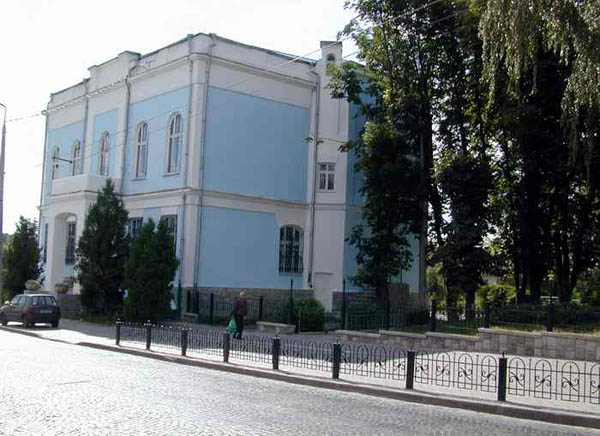
|
|
|
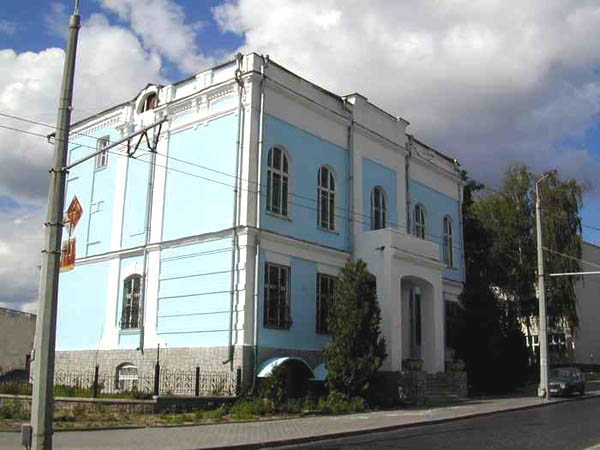
|
| Inside the Jewish Secular Society, our Lutsk Jewish children learn about their heritage. |
|
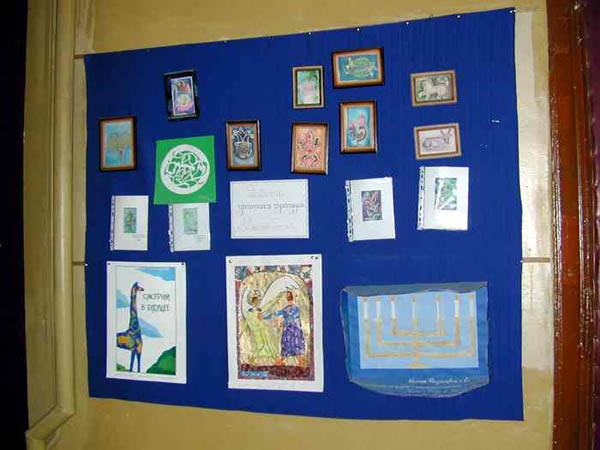
|
|
Below - Houses, businesses, small shops, that had been owned by Jewish families before the War.
|
|
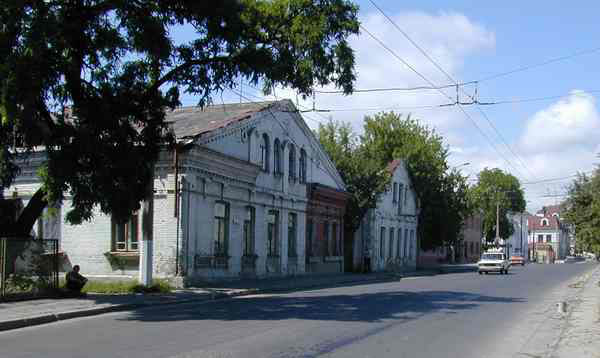
|
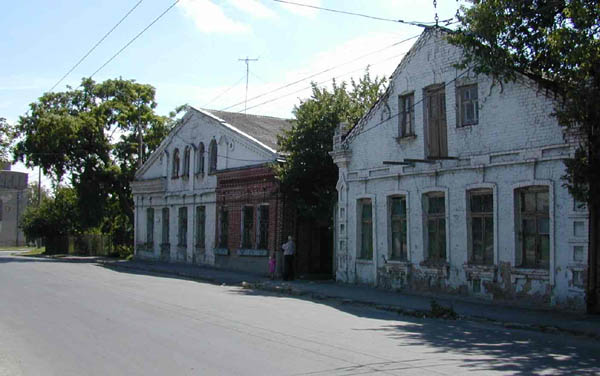
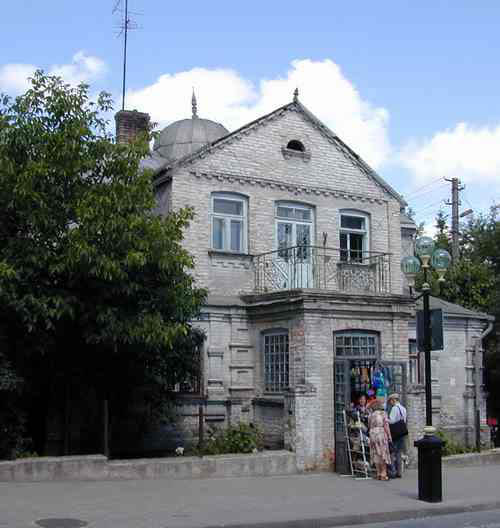
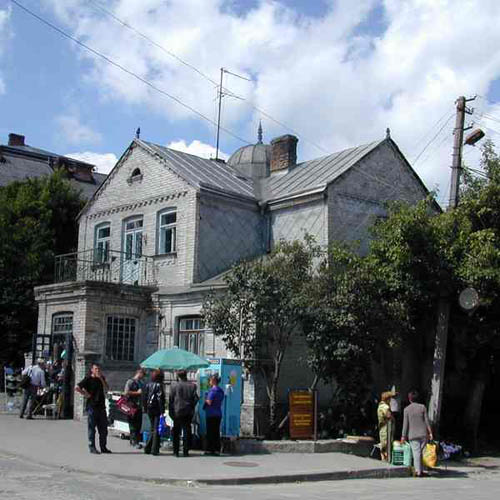
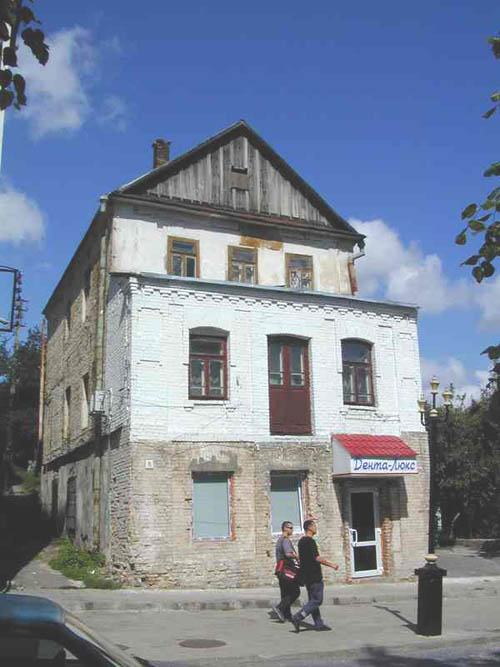
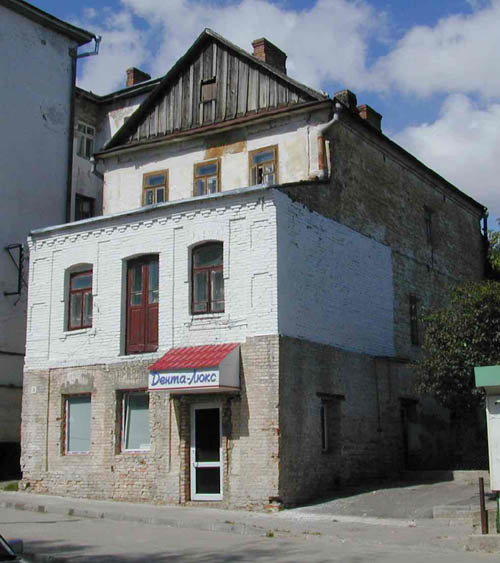
|
Below - The Castle, a landmark entering its fifth century
|
|
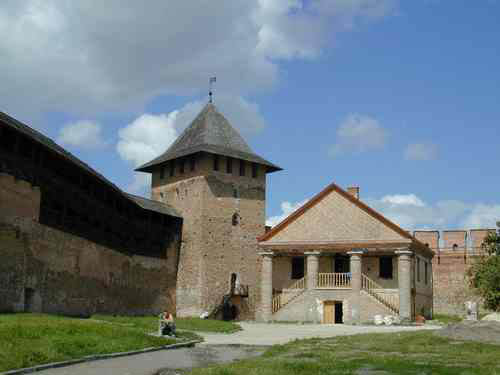
|
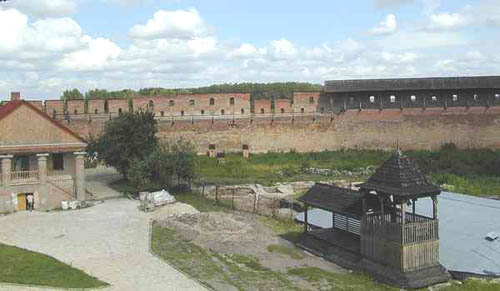
|
Below Castle Square and then three views of Jagelionska Street today
|
|
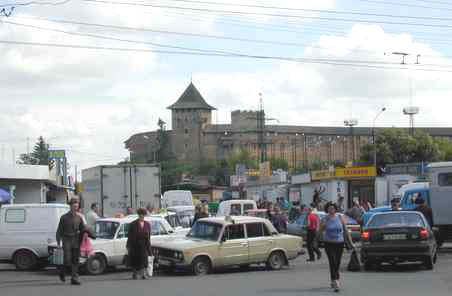
|
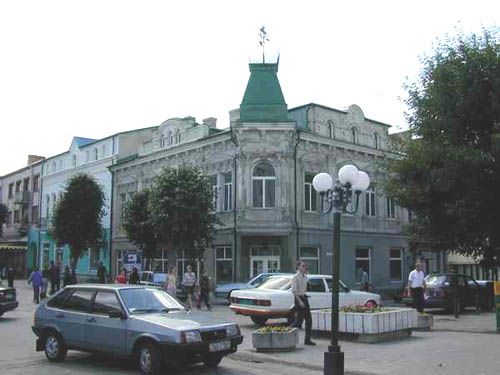
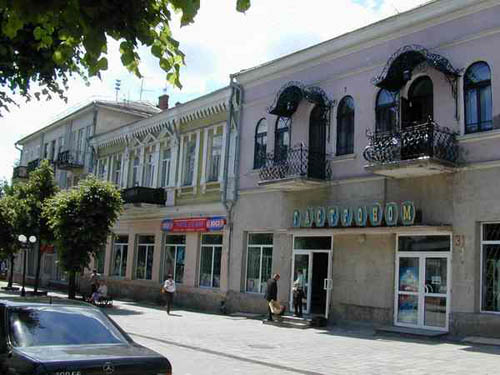
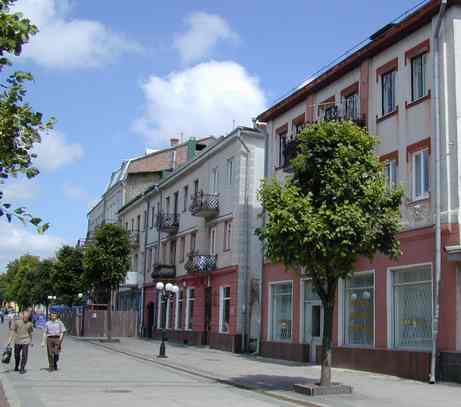
Images of the old fortress synagogue in Lutsk, the defining view of Lutsk in old postcards:
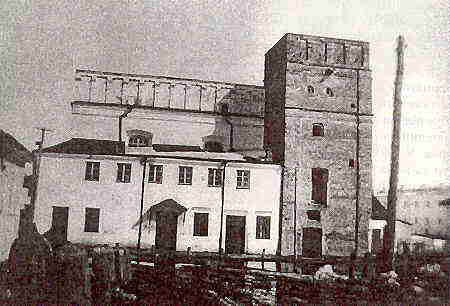
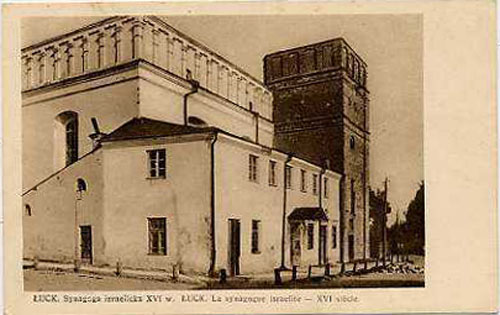
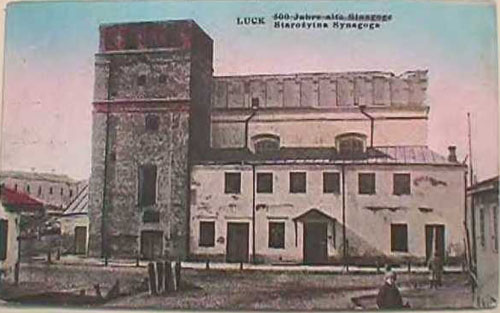
from the collection of Marvin Brooks